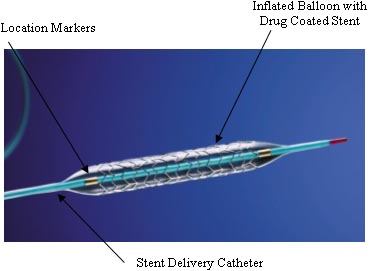Attn: Burt Cohen Re: Stents Downgraded by Wall Street Journal: If Only It Were That Simple. Dear Mr Cohen, Like you I responded to the article “A Simple Health-Care Fix Fizzles Out” by Keith Winstein of the WSJ, dd 2/22/2010: However, unlike you, I drew somewhat different conclusions: RE: WSJ Simplifies Study Results by Ignoring Key Issues … you define …
A patient with Coronary Artery Disease
I thought to post a recent evaluation of a patient who contacted me for consultation: Mrs. XYZ, DOB: 1955 57 years old White Female, with low level Angina and progressive loss of exercise tolerance (fatigue, “can’t do much anymore”). (A significant factor in her care may well have included no health insurance, even though she rendered full payments at the …
CT Coronary Angiography comes of age!
A non-invasive and much cheaper test for coronary disease is available when a diagnosis of CAD is uncertain. Until recently, CT Coronary Angiography (CTCA)could not adequately identify coronary artery blockages. While not accurate enough to provide a pathway necessary to identify and treat these lesions, it avoids the risks and high costs of cardiac catherization, an important benefit. CTCA is most …
The Dangers of Surgery after Stenting
In a new article the risks of non-cardiac surgery from within 6 weeks up to a year after placement of a coronary artery stent are discussed. The authors conclude that other surgery can be quite dangerous, presumably because medications, needed to keep the stent open, have to be stopped to avoid the risk of bleeding during the procedure. It has …
Low Diagnostic Yield of Elective Coronary Angiography
(From: Low Diagnostic Yield of Elective Coronary Angiography, Manesh R. Patel, M.D.,et al.,N Engl J Med 362;10, 886-895) …slightly more than one third of patients without known disease who underwent elective cardiac catheterizationhad obstructive coronary artery disease. The authors analyzed data from a national registry on cardiac catheterization, reporting only 38% of elective, diagnostic coronary angiograms showed obstructive lesions, and 39% of …
Antiplatelet Drugs, Prevention and Treatment of Arterial Thrombosis
Current guidelines support dual antiplatelet therapy with aspirin and clopidogrel (Plavix) in a number of clinical scenarios: ST-segment-elevation myocardial infarction (SEMI), Non-ST-elevation MI, Percutaneous Coronary Intervention. The guidelines are based on strong evidence from several large randomized clinical trials over the last 10 years. Dual antiplatelet therapy is recommended after ST-elevation MI or non-ST-elevation acute coronary syndromes, with aspirin indefinitely …
The BARI 2D Trial Study
The BARI 2D Study Group. A randomized trial of therapies for type 2 diabetes and coronary artery disease In this study, the authors report the findings of the Bypass Angioplasty Revascularization Investigation 2 Diabetes (BARI 2D) trial, involving 2368 patients with both diabetes and coronary disease. Patients with type 2 diabetes and stable ischemic heart disease were randomly assigned to …
Unnecessary procedures
In a study, published on-line in the journal Circulation on April 13, 2010, cardiologists were asked under what circumstances they would order a cardiac catheterization. 29% of physicians ordered the test for other than clinical reasons, foremost amongst them malpractice concerns. About 25% of the doctors ordered more tests than were necessary, driving up costs. Others did it because of …
Healthcare Costs
The following link from The Kaiser Family Foundation calculates the costs for persons aged 19-64 who have to buy their own health insurance. As a drawback of this calculator it doesn’t compare with costs under the previous system: Calculate the cost of your Healthcare under the new Healthcare Reform Bill
Copy of a letter to the Editor, Wall Street Journal
In regards to your February 11, 2010 article in The Wall Street Journal “A Simple Health-Care Fix Fizzles Out” by Keith Winstein, I would like to add a few comments and perhaps an explanation why, in my opinion, studies such as the COURAGE trial have had little or no effect on the way Coronary Artery Disease (CAD) is treated: COURAGE …




